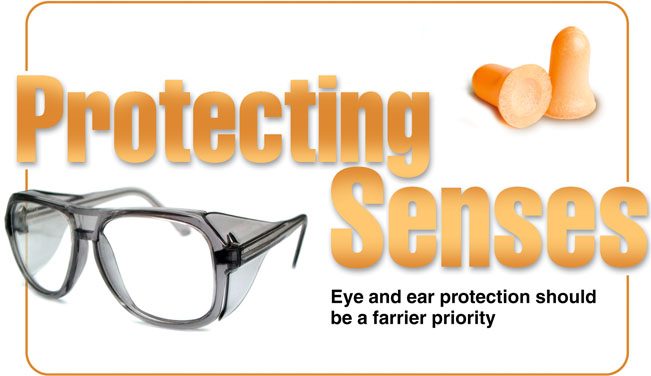American Farriers Journal
American Farriers Journal is the “hands-on” magazine for professional farriers, equine veterinarians and horse care product and service buyers.

No farrier would get under a horse if he or she knew that it was just waiting to kick the shoer out of the barn. The farrier would take precautions first — ask that a vet administer a tranquilizer, maybe consider using a twitch or other restraining advice. Maybe even tell the owner the job can’t be done with the horse in its present mood.
After all, why take chances?
Yet many farriers take easily avoidable chances every day — when they shoe horses and work at the anvil without proper eye and ear protection.
According to the Occupational Safety and Health Administration, an estimated 1,000 eye injuries take place in the workplace every day. OSHA estimates that these injuries cost more than $300 million per year in lost production time, medical expenses and workers’ compensation payments — and remember, very few farriers are covered by workers’ compensation.
A 1980 survey by the Bureau of Labor Statistics looked at 1,000 minor eye injuries. The results indicate that:
Statistics involving farriers aren’t available, but it’s easy…